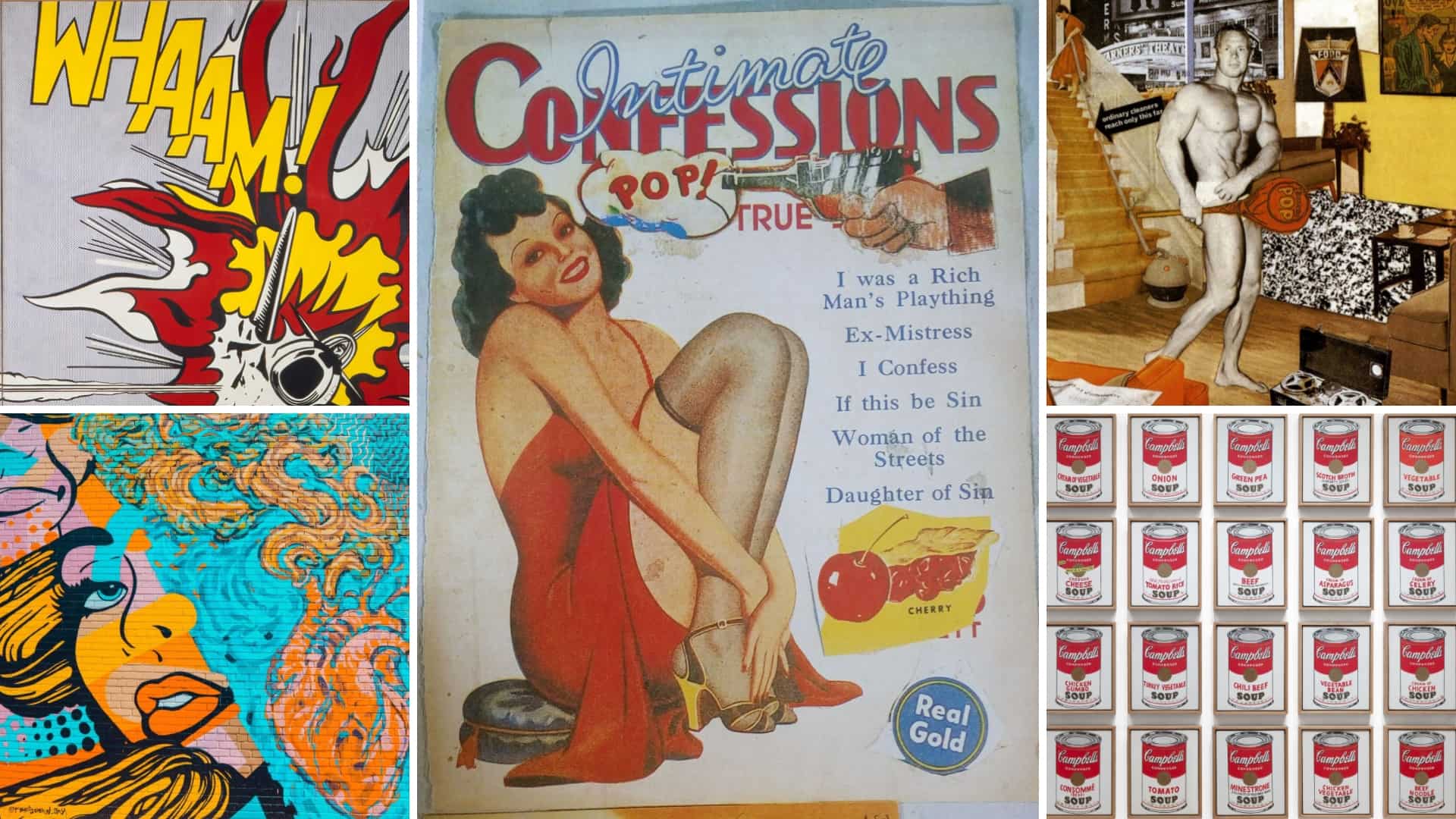Colors. Commodities. Counter culture. What is Pop Art? Even if you don’t know it by name, you have no doubt seen it here and there, either directly or indirectly. It was born from artists rejecting tradition in favor of modernity, in turn creating a new form of art that looked so much like the barrage of advertisements consumers of the mid-20th century were already used to. Here we are going to provide a Pop Art definition, cover Pop Art artists, and provide examples, some of which are super famous and others that are less so.
Pop Art Definition
Let's define Pop Art
For most of its history, art has been taken "seriously." The works themselves and their reception are often intended to be meaningful and thoughtful endeavors. For many, art is a chance to explore our world, the nature of ourselves, and what it all means. You may have heard the term "high art."
But the world evolved where products and advertising became inescapable in our daily lives. This provided new material for artists to explore. The process is the same (examining and engaging the world around them) but the output was very different. Pop Art is "low art" on purpose — not because the questions changed, but because the answers did.
We will provide a basic definition below, along with some characteristics to better explain the art works of the movement.
POP ART DEFINITION
What is Pop Art?
Pop Art is an art movement focused on rejecting the traditional rules of art at the time, instead choosing to look at modern advertising and popular culture for inspiration. It came primarily from the UK and USA, with smaller movements elsewhere. This resulted in art that intentionally looks kitsch or “low brow” compared to what the art world was used to at the time.
Pop Art Characteristics:
- A rejection of “high art” in favor of art that reflected (and looked like) the world around them.
- Using bold colors and flat compositions to present art that could almost double as a commercial ads.
- Painting and screen printing images as accurately as possible to their original look (comic strips, buildings, food products).
Pop Art Movement
Who created Pop Art?
The origins of the Pop Art movement are mainly in two places that had different views on the emerging style: the UK and the USA.
UK
In London 1952, a group of young artists, writers, and critics came together to form the Independent Group (IG). This group met to discuss American popular culture and its place in the mainstream, as well as its artistic value.
This group included some well known Pop Art artists like Eduardo Paolozzi, who made one of the first pieces to define Pop Art with I was a Rich Man’s Plaything (1947), a collage made up of clippings.
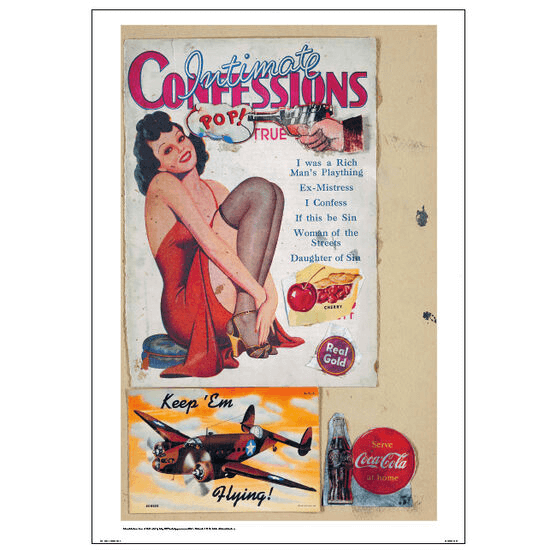
What is Pop Art • Eduardo Paolozzi
Richard Hamilton was also in the IG and he’s well known for creating another early Pop Art collage, Just what is it that makes today’s homes so different, so appealing? (1956).
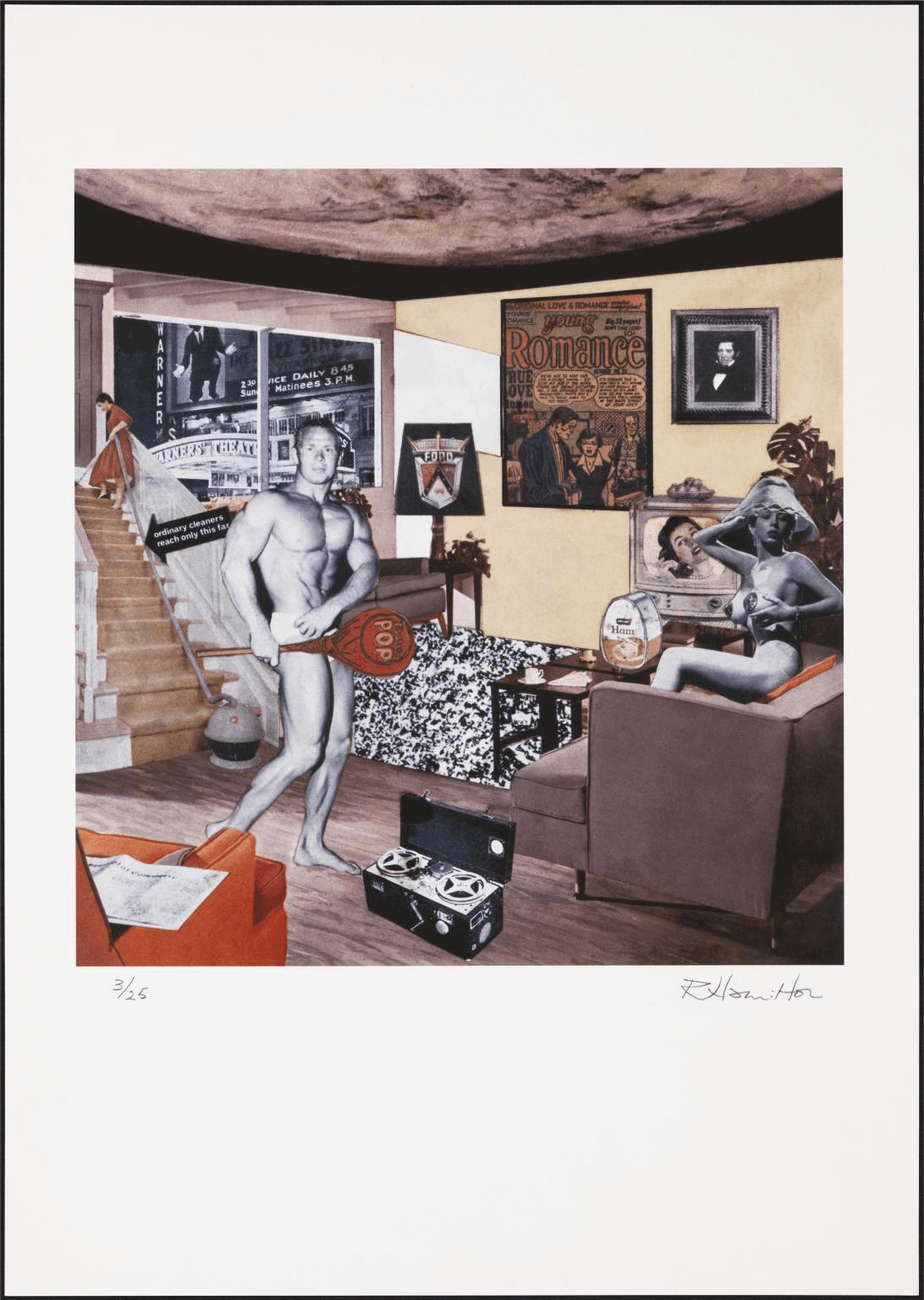
Pop Art characteristics • Richard Hamilton
In the case of both collages, they demonstrate how artists incorporated modern day imagery from popular culture to comment on said culture, as well as pushing boundaries while asking what could be considered art.
USA
While the UK was looking at American culture from afar, the USA was (obviously) living in it. Artists rejected Abstract Expressionism in favor of art closer in spirit to Dadaism and Neo-Dadaism; this meant looking at the world you lived in and putting that into your art. In other words, Pop Art was about looking externally, not internally.
Pop Art aimed to be a mirror of the world the artists lived, breathed, and consumed in. Some of the Pop Art artists associated with the movement had experience with art schools and advertising, which would explain why the art itself so often looks clean and precise (which is also where the rejection of then-contemporary art movements is showcased).
Pop Art Style
Pop Art Examples
We mentioned a couple of the known Pop Art artists from the UK, but the majority of the most well known artists are from the USA. There are many, but for our purposes, we’ll name a few essentials.
You either start or end a topic about Pop Art with the man who helped codify it as part of American culture, so we’ll start with Andy Warhol. His name is synonymous with the movement and Pop Art painting to the point where you could easily forgive someone for thinking he’s the only one who did it.
From the iconic Campbell soup cans to the unforgettable Marilyn Monroe screen prints, Warhol proved that the rules around art could not only be bent but criticized.
By replicating everyday brands and objects and putting them on display, Warhol made everyone change their outlook on what could be called art.
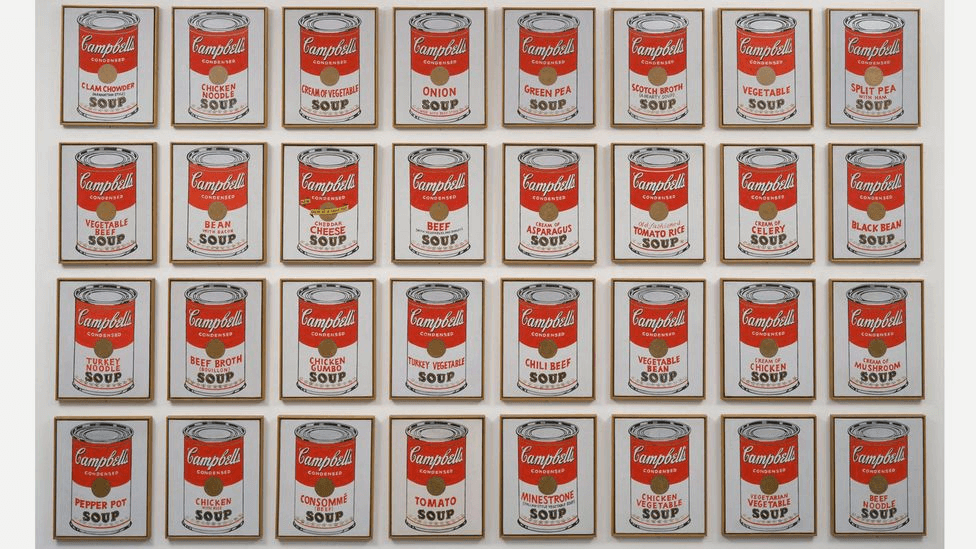
What is Pop Art • Warhol’s Campbell Soup cans
Warhol’s influence was not limited to paintings and screen prints, as he also made art films that could test the patience of even the loftiest film critics. One of his most famous movies is Empire (1965), which is just eight hours of the Empire State Building in black and white over the course of a slow-motion six-and-a-half hour time lapse.
His films, along with his posse in the New York art world (which included the now famous and influential rock band The Velvet Underground), made a bold statement that resonates to this day.
Pop Art artists • Warhol’s Empire
Related Posts
James Rosenquist is another monumental Pop Art artist who painted collage-style works, some of which are colossal. For example, F-111 (1964-65), which combines a variety of real images that have been replicated with oil paint and aluminum. With a dedication to making everything look like the real thing, Rosenquist wanted to present the feeling of sensory overload that we experience from constant advertisements.
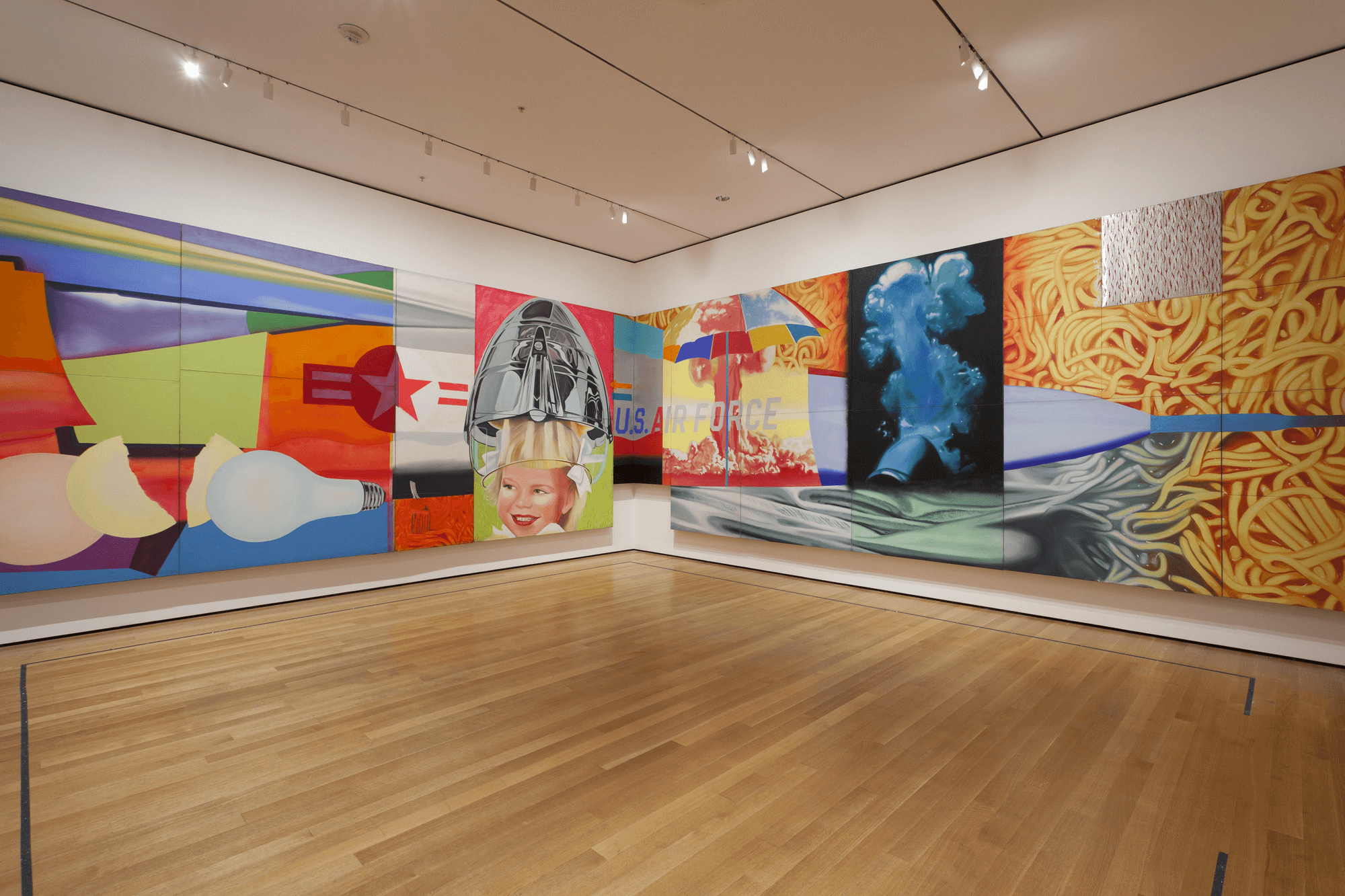
What is Pop Art • Rosenquist’s F-111
While Warhol and Rosenquist focused on advertising, one artist looked to comic strips for inspiration: Roy Lichtenstein. His paintings meticulously imitated the comic look, right down to the Ben Day dots that would only ever appear on literal comic strip paper due to the printing process.
Lichtenstein often took a pre-existing comic panel and cropped it; doing this removed the original image from its original context and allowed him to make something new (in art, this is called appropriation). The results are often parodic, biting, and almost unnervingly familiar.
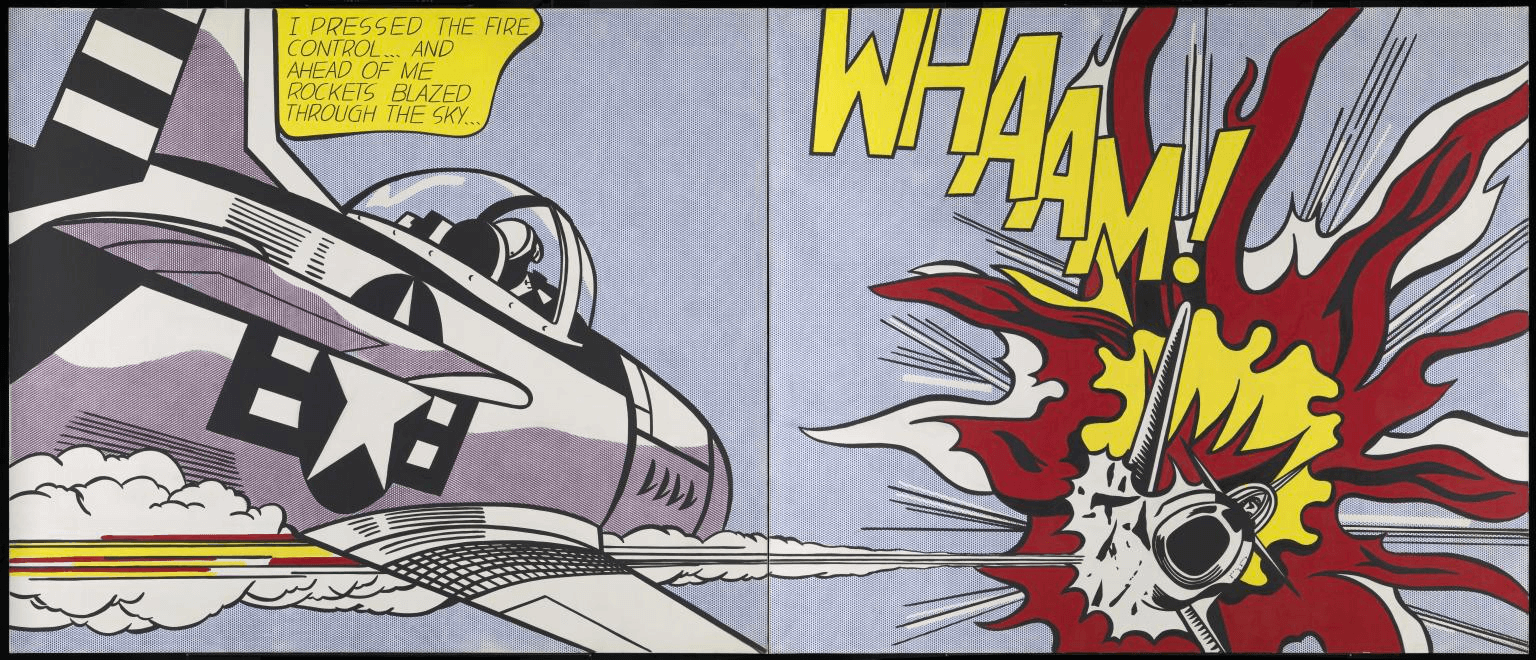
What is Pop Art style • Lichtenstein’s WHAAM!
It should also be noted that Lichtenstein did artwork outside of traditional painting. In addition to sculptures in Miami and Barcelona, Lichtenstein did a mural of porcelain enamel for the Metropolitan Transportation Authority: the Times Square Mural.
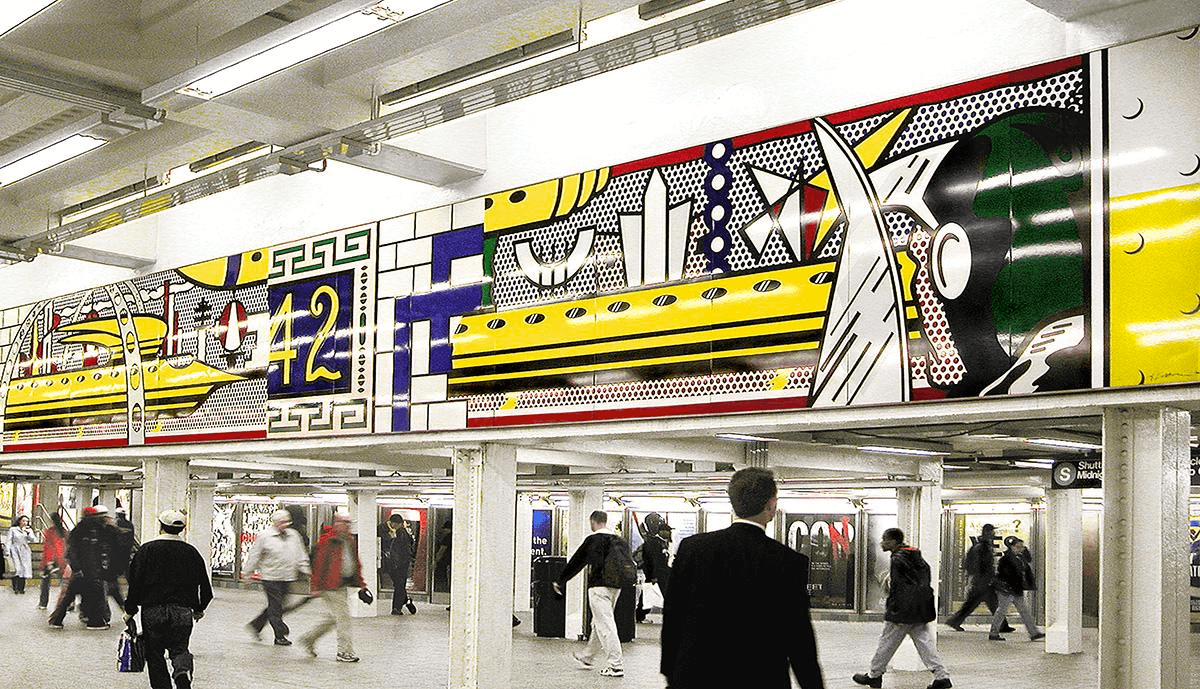
What is Pop Art • Times Square Mural
There are so many more Pop Art artists to discover, including some that came after the initial 1960s and ‘70s heyday. And the Pop Art style continues to be innovative to this day, especially with how easy it is now to create your own digital collages. While Pop Art does have a specific look to it, it will always be rooted in an undying attitude that continues to thrive.
UP NEXT
Explore More Styles and Movements
This was just one of many fascinating segments of art history. There are many eras, styles, artists, and movements to discover. Let's continue our study by choosing the next stop on your way to becoming an art aficionado. Below you can visit our Art Styles Index, our Art History Timeline, or choose an individual movement.
Showcase your vision with elegant shot lists and storyboards.
Create robust and customizable shot lists. Upload images to make storyboards and slideshows.
